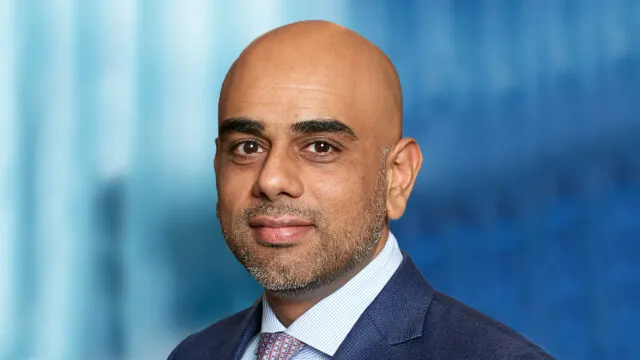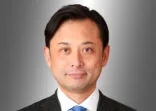Franklin Templeton is looking to double its assets under management (AUM) in Japan over the next three to five years to $80bn, its head of Asia Pacific, Tariq Ahmad (pictured), told FSA during a recent interview.
Franklin Templeton’s AUM in Asia Pacific stood at $170.4bn at the end of March, an increase of 13% quarter on quarter and just over 10% of group AUM.
Ahmad told FSA that he was targeting 5%-7% growth in regional AUM going forward and “ideally” 10%, while he is projecting a big source of this higher revenue would come from Japan as well as strengthening the firm’s distribution capabilities with private banks.
“We’ve had a lot of success across Apac over the last couple of years, but two things stand out. One is Japan. And a second big focus for me is the private banking channel. It’s an opportunity we really have to capture and get right,” he said.
Ahmad said that the firm, which has been famously so acquisitive under the watch of its current CEO Jenny Johnson, was considering inorganic opportunities in Japan, which would help meet its AUM target.
“If you think of Japan, a large proportion of Japanese flows are domestic and a domestic target does make some sense. Japan is what I’m looking at quite a bit at the moment. I think that’s a market which has increasing opportunities,” he said.
Acquisitive firm
A lot of mid-sized investment managers, which have seen their market share gobbled up by the larger firms and more and more business shift towards passive products, have responded by buying out smaller firms or in some cases combining.
Although, it is hard to think of a more acquisitive firm than Franklin Templeton during the past five years. Its $4.5bn acquisition in 2020 of Legg Mason remains one of the largest in the industry’s history and the largest in the firm’s history.
It has followed up with a series of smaller acquisitions, particularly in alternatives, including the private equity specialist Lexington Partners and private credit specialist Alcentra.
As a result of its acquisitions, Franklin Templeton’s group AUM has swelled from $622.8bn at the end of the third quarter of 2020 to $1.64trn at the end of the second quarter of this year.
Its critics argue that it has adopted a bit of a scattergun approach and in some cases, notably Legg Mason, has overpaid. Although, Ahmad argues that it has been important in terms of achieving scale quickly, an increasingly important trait within the industry.
“Scale does matter. I think you’re seeing this across the industry. You’re seeing the larger asset managers getting larger. There is the backdrop of an industry trend. You think of fee compression, you think of increasing regulation, the cost of data. The cost of running a business is getting pretty intensive,” he said.
Increasing specialisation
It is not just scale that Franklin Templeton has been targeting with its acquisitions though. Ahmad underscores the point that a lot of the focus has been on growing its alternatives offering, an area where Franklin Templeton has traditionally had fewer resources.
Franklin Templeton is not alone in this regard. Despite a tough year for fundraising for alternative assets, investment managers have been piling into private markets in particular due to the higher fees on offer and their increasing appeal to high-net-worth clients.
The most notable recent example of this is BlackRock’s $12.5bn acquisition of Global Infrastructure Partners, which was announced in January, although other firms including Amundi and T Rowe Price have also made acquisitions in the last few months.
Ahmad thinks this is a wise strategy given the opportunities that exist in private markets, citing the example of Lexington Partners, which broke the record for the largest secondaries fund ever raised earlier this year at $22.7bn.
“It was in part to complete the product offering, but I would say it was more strategic. We were looking at market trends, in terms of the growth of certain asset classes and we wanted to be ahead of that journey,” he said.
“One example would be secondary private equity. Secondary private equity has been one of the fastest growing asset classes in terms of institutional appetite for the last couple of years.”
Multi-boutique model
Acquiring assets is in some respects the easy part, whereas the challenging aspect is knitting everything together.
The industry has been littered with mega deals that have not really worked out as planned, most obviously typified by some of the tie-ups between mid-sized firms such as Janus Capital Group and Henderson Group as well as Standard Life and Aberdeen Asset Management.
Add to that the fact Franklin Templeton has a fairly unusual ownership structure, still being partly owned by the Johnson family (a family member has always been at the helm of the company) and it is easy to see how the firm’s acquisition spree is potentially fraught with difficulties if there were a clash of cultures.
One factor that Ahmad believes holds Franklin Templeton in good stead is the fact that it has generally kept the brands, not to mention the investment processes, of the firms they have acquired intact.
“When a client buys into Franklin Templeton, they know they’re getting very different outcomes from these managers. That was an important thing for us to make sure we preserved because when you start combining teams and trying to think you get synergies, you get into difficulties,” he said.
“When I go into clients, do you know what they are thinking? They will not tell us that they have any concerns or reservations about what we’ve done with our managers, put it this way. And the best thing is also the client will go and see the managers as well and then come and see us and they corroborate the story.”
Japan push
Franklin Templeton’s push into Japan is in some respects a logical outgrowth of the acquisitions they have already made, given that alternatives as an asset class remains largely untapped compared with other similar size economies.
The Government Pension Investment Fund has been increasing its allocations to alternatives in the past few years, although this has been via fund of fund programmes rather than via direct investments.
At the same time, the opportunities are also much broader. As the country emerges from its decades long deflationary spiral, more investors are shifting their money out of bank deposits to hedge against inflation.
This is also a trend that is being encouraged actively by the Japanese government, for example through the overhaul of the Nippon Individual Savings Account (Nisa) in January, which was revamped to encourage households to invest in riskier assets such as stocks.
“I think the initiatives on the government Nisa programme for instance is a starting point in terms of giving you an entry to understand there’s a lot to capture here in terms of addressable AUM,” said Ahmad.
“Remember in Japan, you’ve got a high deposit rate. A lot of investors are sitting on cash and with the move in yields, and hopefully the yen comes back at some point in terms of its current weak point, this will create some interesting opportunity for a lot of investors.”
Private banking
Other than Japan, the other big focus for Ahmad is on increasing its footpring with the private banks in the region. Ahmad acknowledges that the firm has generally done a better job with the mainstream retail channels instead.
“Where I think we could do a better job is really placing the right products with the private banks. I think of the private banking channel almost as institutional-like in terms of the conversations we have with them.”
“We are a pretty strong business in terms of AUM and market size but a lot of the private banks are thinking a lot in terms of how to manufacture alternative solutions. We’ve seen a huge uptick there.”
Regardless, it is understandable why Franklin Templeton would want to target private banks. Asia continues to mint more millionaires and billionaires at a record pace and even if only a small fraction of that new-found wealth finds itself into official channels offshore, the opportunities are huge.
The concern though is that practically every asset manager at the moment is also looking to increase their footprint with private banks. Things are even more competitive when it comes to dealing with family offices.
Ahmad cites some of the changes to personnel he has introduced. A new head of private bank and family offices is going to be starting soon with the firm, for example. He also thinks the increasing focus of private banking clients on alternatives dovetails nicely with the firm’s recent acquisitions.
“We are largely building products, where we’re offering solutions, semiliquid perpetual vehicles for instance, where clients are now getting access to secondary private equity or private debt interval solutions.”

















